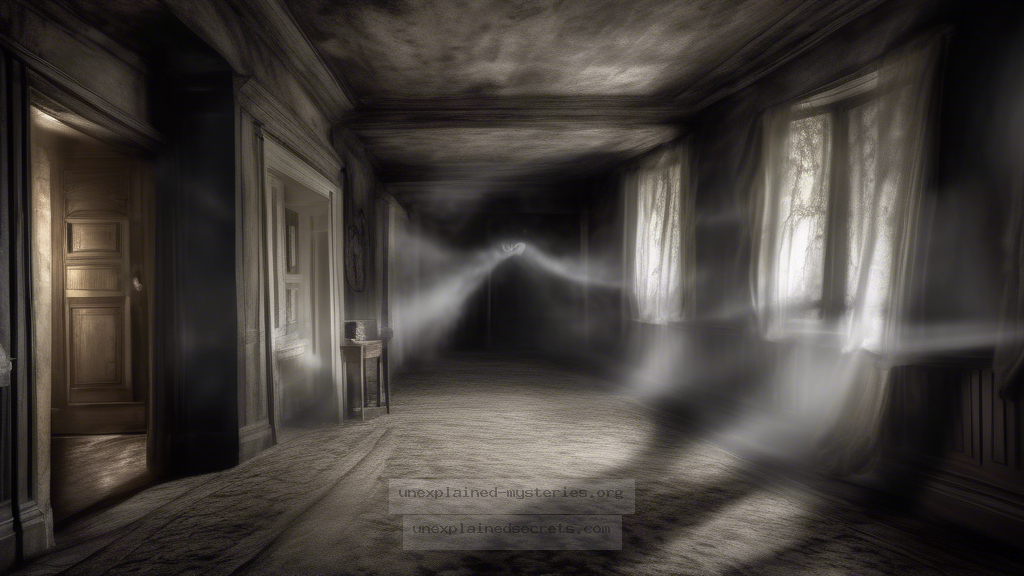What Are the Most Compelling Cases of Ghost Sightings in Historical Locations?
What Are the Most Compelling Cases of Ghost Sightings in Historical Locations?
The fascination with ghost sightings in historical locations captures the imagination of many, as it intertwines history, culture, and the unknown. Ghost stories often convey deep-seated human emotions and the remnants of lives once lived. As we explore some of the most compelling cases, we delve into the stories behind the spirits and the historical significance of these locations. Understanding these phenomena not only enriches our grasp of the past but also challenges our perceptions of reality. Let’s embark on this eerie journey through time and space to uncover the mysteries surrounding ghost sightings in historical contexts.
Historical Context of Ghost Sightings
Ghost sightings are often steeped in history, with many cases emerging from locations that have witnessed significant events. Historical locations, such as battlefields, old estates, and abandoned towns, are often the backdrop of ghostly encounters. For instance, the battlefields of Gettysburg, Pennsylvania, are infamous for reports of ghostly apparitions, believed to be soldiers who perished during the Civil War. The emotional weight of loss and conflict in these places may contribute to the perception of lingering spirits.
Throughout history, different cultures have interpreted ghost sightings through various lenses, often reflecting societal fears and beliefs. In the Victorian era, the fascination with death and the afterlife led to a surge in ghost stories and spiritualism. This period saw an immense interest in communicating with the deceased, with mediums often claiming to channel spirits. Such historical contexts provide a rich tapestry for understanding why certain locations are more prone to ghost sightings than others.
Core Concepts Behind Ghost Phenomena
Understanding ghost phenomena requires some exploration of core concepts. Ghosts are often described as the spirits of deceased individuals who have not fully transitioned to the afterlife. Various theories attempt to explain why these entities might linger in certain locations:
- Trapped Energy: Some theorists propose that strong emotional events, such as trauma or tragedy, can leave an imprint on the environment, creating a ‘haunting’ effect.
- Residual Hauntings: This theory suggests that certain places replay past events like a tape recorder, leading to sightings that are not interactive but rather a snapshot of history.
- Intelligent Spirits: Conversely, some believe that spirits can actively interact with the living, seeking closure or attempting to communicate their unfinished business.
These concepts form the basis for many investigations and contribute to the allure of ghost stories attached to historical sites.
Case Study: The Tower of London
The Tower of London, one of the most infamous sites in the UK, is steeped in ghost stories. Historically, the tower served as a royal palace, fortress, and prison, witnessing numerous executions and tragic events. One of the most famous ghosts reported is that of Anne Boleyn, the second wife of Henry VIII, who was executed in 1536. Witnesses claim to have seen her headless apparition wandering the grounds and even within the chapel where she was buried.
Other ghostly figures reported include those of Lady Jane Grey and the Princes in the Tower, whose fates remain shrouded in mystery. The historical significance of the Tower creates a rich backdrop for these sightings, illustrating how the emotional weight of past events can leave an imprint on the location.
Case Study: Gettysburg Battlefield
The Gettysburg Battlefield is another historical location notable for its ghost sightings. The site of one of the Civil War’s bloodiest battles, it is often considered a hotspot for paranormal activity. Visitors and paranormal investigators have reported hearing the sounds of cannon fire, the cries of wounded soldiers, and even sightings of ghostly figures in Union and Confederate uniforms.
The emotional energy from the battlefield’s tragic history may contribute to the many reports of ghostly encounters. Some believe that these spirits are trapped, reliving their last moments, while others think they may be trying to communicate their stories to the living. The Gettysburg Ghost Tours offer a unique opportunity for those interested in experiencing the paranormal first-hand, further enhancing the allure of this historical site.
Comparative Analysis of Historical Ghost Sightings
When examining ghost sightings across different historical locations, certain patterns emerge. The following table summarizes key sites and their associated ghostly phenomena:
| Location | Reported Ghosts | Historical Context |
|---|---|---|
| The Tower of London | Anne Boleyn, Lady Jane Grey | Site of executions and imprisonment |
| Gettysburg Battlefield | Union and Confederate soldiers | Site of the Civil War’s pivotal battle |
| Eastern State Penitentiary | Prison inmates | Famous for harsh conditions and notable inmates |
| Château de Brissac | The Green Lady | Site of betrayal and murder |
This comparative analysis illustrates that many ghost sightings are tied to locations steeped in tragedy or significant historical events, reinforcing the idea that emotional energy may linger in these spaces.
Alternative Perspectives on Ghost Sightings
While many take ghost sightings at face value, skeptics offer alternative explanations. Some believe that ghostly encounters can be attributed to psychological phenomena, such as pareidolia, where the brain perceives familiar patterns in random stimuli. Others suggest that environmental factors, like electromagnetic fields or infrasound, could induce feelings of unease or hallucinations, leading to ghost sightings.
Additionally, the influence of folklore and cultural narratives plays a significant role in shaping ghost stories. The stories we tell often reflect societal fears and beliefs, thus coloring individual experiences with the paranormal.
Common Misconceptions About Ghosts
There are several misconceptions that surround ghost sightings in historical locations. One common myth is that all ghosts are malevolent or harmful. In reality, many reported ghostly encounters are benign, with spirits appearing simply to check in or communicate. Another misconception is that any unexplained phenomenon must be attributed to a ghost, overlooking the possibility of natural or psychological explanations.
Furthermore, the portrayal of ghosts in media often sensationalizes the phenomenon, leading to skewed perceptions and expectations. Understanding these misconceptions is crucial for those interested in exploring the paranormal.
Best Practices for Investigating Ghost Sightings
If one wishes to investigate ghost sightings in historical locations, several best practices can enhance the experience:
- Research the History: Understanding the historical context of a location can provide valuable insight into its ghostly phenomena.
- Use Reliable Equipment: Invest in quality paranormal investigation tools, such as EMF meters, digital voice recorders, and infrared cameras.
- Document Everything: Keep a detailed journal of experiences, sightings, and evidence collected during investigations.
- Respect the Space: Always approach investigations with respect for the individuals and history associated with the location.
By following these guidelines, investigators can contribute to a more informed and respectful exploration of the paranormal.
Future Developments in Ghost Research
The field of paranormal investigation continues to evolve, with advancements in technology paving the way for new methods of research. The use of artificial intelligence and machine learning could facilitate the analysis of vast amounts of data collected during investigations, leading to more credible findings.
Additionally, interdisciplinary studies that incorporate psychology, history, and cultural studies could provide a more comprehensive understanding of ghost sightings, bridging the gap between the scientific and the supernatural. As interest in the paranormal grows, so too does the potential for meaningful discoveries in this enigmatic field.
Conclusion: The Allure of Historical Ghost Sightings
The exploration of ghost sightings in historical locations reveals a complex interplay of history, emotion, and the unknown. From the haunted halls of the Tower of London to the restless spirits of Gettysburg, the stories behind these phenomena enrich our understanding of the past and challenge our perceptions of reality. While skepticism is essential, the allure of ghost sightings continues to captivate those willing to explore the boundaries of the known and unknown. As we navigate this fascinating terrain, we must remain open to the myriad possibilities that lie beyond our understanding, all while respecting the legacies of those who came before us.
Other Articles
Recent Posts
- What Happened to Flight MH370? The Conspiracy Theories That Still Haunt Us
- What Secrets Lurk Within the Walls of the Infamous Trans-Allegheny Lunatic Asylum?
- What Evidence Supports the Existence of Bigfoot in the Pacific Northwest?
- What Happened to the Indus Valley Civilization? Unraveling the Mysteries of Ancient Urban Life
- Can Telepathy Be Scientifically Proven Through Laboratory Evidence?







